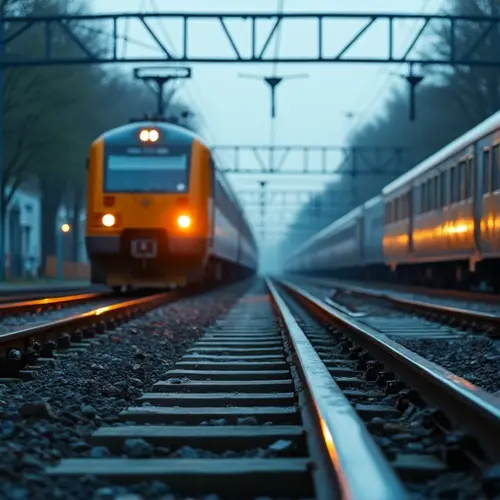
How AI is Preventing Train Collisions
Revolutionizing Rail Safety with Real-Time Monitoring and Predictive AI
In a groundbreaking development, artificial intelligence (AI) is now being leveraged to prevent train collisions, marking a significant leap in rail safety. Researchers have developed a system that combines AI with guided ultrasonic waves to detect faults in switch rails—critical components that guide trains from one track to another. This innovation is particularly vital as high-speed rail networks expand globally, increasing the risk of accidents due to wear and tear on these components.
The Challenge of Switch Rails
Switch rails are prone to damage due to their complex structures and heavy workloads, especially in high-speed rail systems. Traditional inspection methods, such as eddy currents and magnetic flux leakage, are limited to detecting surface-level defects and are inefficient for large-scale monitoring. Ultrasonic techniques, while capable of deeper inspections, are time-consuming and impractical for frequent use.
The AI Solution
A team at Stony Brook University has pioneered a solution using AI and guided ultrasonic waves. These waves propagate over long distances and are highly sensitive to defects, enabling rapid and accurate inspections of large rail sections. The researchers employed a Convolutional Neural Network (CNN) model to analyze the ultrasonic data, achieving over 91% accuracy in detecting internal faults in switch rails.
"Our model outperforms existing methods in every aspect," says Zhaozheng Yin, an associate professor at Stony Brook University. "It can distinguish between normal and damaged signals, even in the complex structures of switch rails, and is adaptable to various conditions."
Implications for Rail Safety
The adoption of this AI-driven system could revolutionize rail maintenance, allowing for real-time monitoring and predictive maintenance. This is especially crucial as rail networks are often only accessible for repairs during limited nighttime windows. By identifying defects early, the system can prevent catastrophic failures and enhance passenger safety.
The research, published in NDT & E International, highlights the potential of AI to transform rail safety. As high-speed rail continues to expand, such innovations will be essential to ensuring reliable and accident-free transportation.

 Nederlands
Nederlands
 English
English
 Deutsch
Deutsch
 Français
Français
 Español
Español
 Português
Português